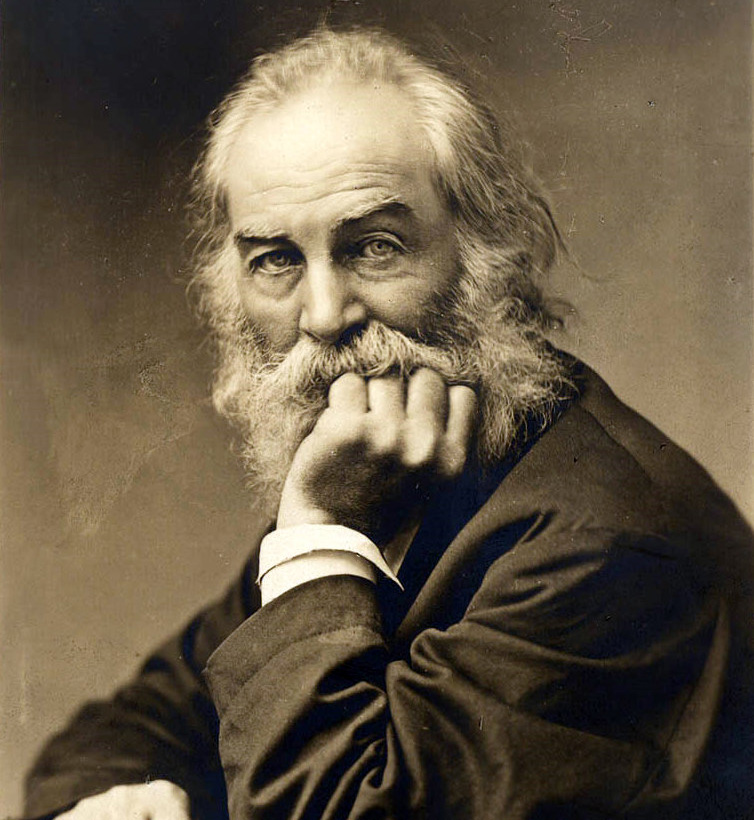How to Exercise Like a Poet: The Walt Whitman Workout
By Maria Popova
The question of whether we are minds in bodies or bodies with minds has animated philosophers for millennia. But whatever our cerebral orientation to the question, we must each answer it for ourselves — a kind of private embodied illumination.
My own accidental answer arrived long ago, when I began noticing that my morning workout provided the most fertile hours for reading and thinking. Every single morning for more than fifteen years, I have journeyed to the gym with a book, filling margins with motion-mangled notes and scribbling ideas sparked in the connective tissue of the mind as blood and electricity course through my muscles.
In the midst of a difficult year, I found myself unable to read anything but Walt Whitman (May 31, 1819–March 26, 1892) during this morning regimen of body and spirit — perhaps because the poet himself so strongly believed in and enacted the relationship between the creaturely and the creative, the physical and the poetic.

More than a decade after his experience as a volunteer nurse in the Civil War awakened him to the vital relationship between body and spirit, Whitman described his own physical regimen in Specimen Days (public library) — the indispensable collection of his prose fragments, letters, and diary entries that gave us Whitman on the wisdom of trees, the singular power of music, how art gives meaning to life, what makes life worth living, and his most direct reflection on happiness.

In an entry from the winter of 1877, still recovering from the paralytic stroke that had left him severely disabled five years earlier, the sixty-six-year-old poet describes his workout in the gymnasium of the wilderness:
A solitary and pleasant sundown hour at the pond, exercising arms, chest, my whole body, by a tough oak sapling thick as my wrist, twelve feet high — pulling and pushing, inspiring the good air. After I wrestle with the tree awhile, I can feel its young sap and virtue welling up out of the ground and tingling through me from crown to toe, like health’s wine. Then for addition and variety I launch forth in my vocalism; shout declamatory pieces, sentiments, sorrow, anger, &c., from the stock poets or plays — or inflate my lungs and sing the wild tunes and refrains I heard of the blacks down south, or patriotic songs I learn’d in the army. I make the echoes ring, I tell you!

The great nature writer John Burroughs — Whitman’s longtime friend, and his first and to this day foremost biographer — further described the poet’s workout in his superb and loving more-than-biography, Whitman: A Study (public library | free ebook), published four years after Whitman’s death.
Burroughs writes:
His exercise for an hour each day consisted in tossing a few feet into the air, as he walked, a round, smooth stone, of about one pound weight, and catching it as it fell. Later in life, and after his first paralytic stroke, when in the woods, he liked to bend down the young saplings, and exercise his arms and chest in that way. In his poems much emphasis is laid upon health, and upon purity and sweetness of body, but none upon mere brute strength.
Both Whitman’s Specimen Days and Burroughs’s Whitman: A Study are books of vigorous and timeless delight. Complement this particular portion with psychiatrist and pioneering PTSD researcher Bessel van der Kolk on how our minds and our bodies converge in healing, neuroscientist Antonio Damasio on how our minds obscure our bodies, and Rilke on the relationship between the body and the soul, then revisit Whitman’s advice to the young on the building blocks of character and his timeless wisdom on living a vibrant and rewarding life.
—
Published June 5, 2018
—
https://www.themarginalian.org/2018/06/05/walt-whitman-workout/
—





ABOUT
CONTACT
SUPPORT
SUBSCRIBE
Newsletter
RSS
CONNECT
Facebook
Twitter
Instagram
Tumblr